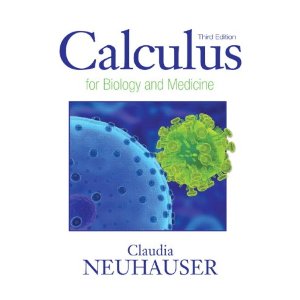The official textbook for this course is Calculus for Biology and Medicine
(3rd edition), by C. Neuhauser. The book is published by Prentice Hall
(IBSN 978-0-321-64468-8). It is very readable and has many worked out
examples. The book can be purchased from the
UK Bookstore ,
Kennedy Bookstore,
Wildcat Textbooks,
or online.
Roughly speaking, we should cover the first six (6) chapters of this book.
We will illustrate the methods and ideas of calculus by studying several
problems from biology. We will study the interpretation of the derivative
as a rate of change, and model growth and declines of populations.
